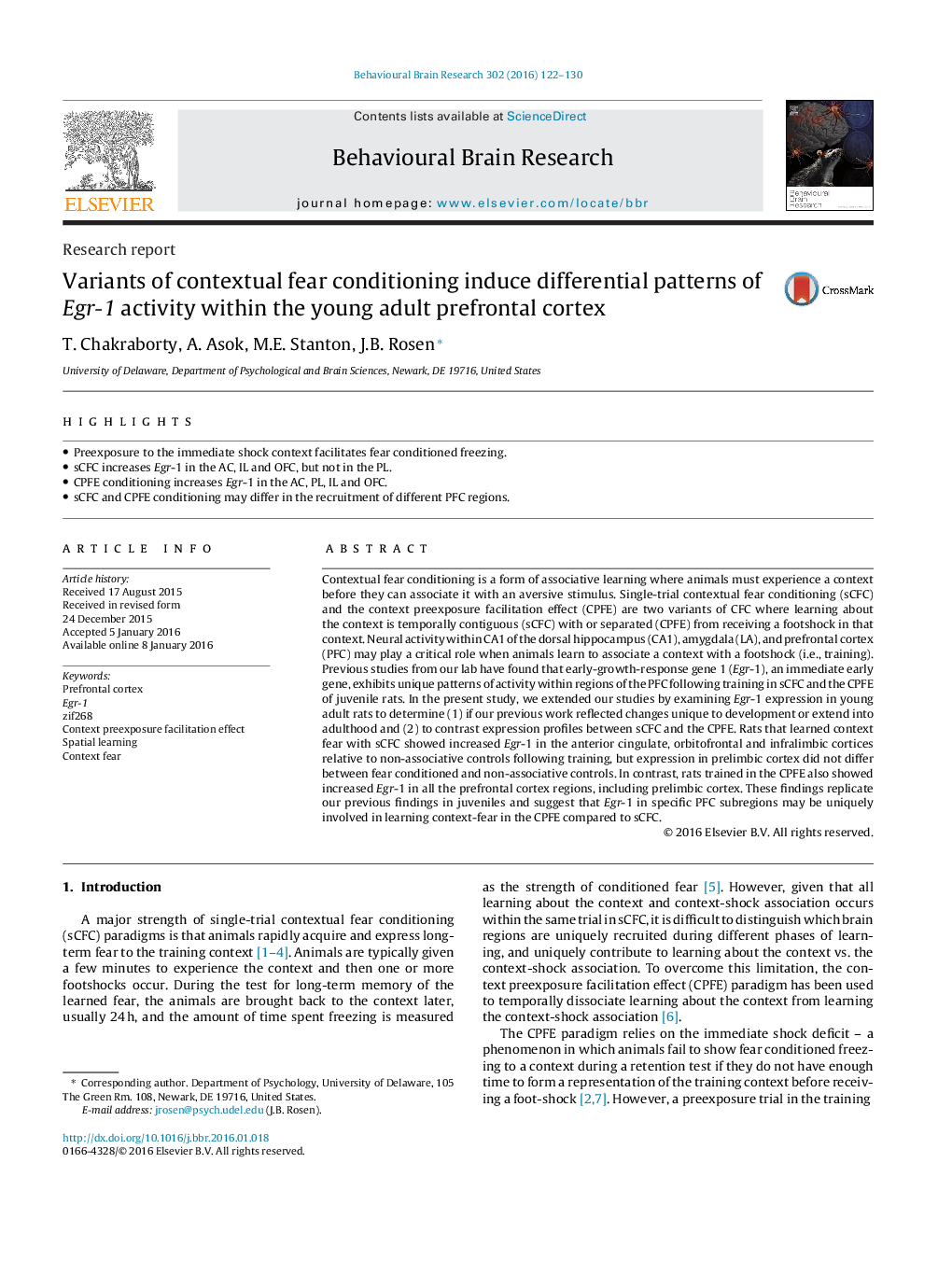| کد مقاله | کد نشریه | سال انتشار | مقاله انگلیسی | نسخه تمام متن |
|---|---|---|---|---|
| 6256159 | 1612931 | 2016 | 9 صفحه PDF | دانلود رایگان |

- Preexposure to the immediate shock context facilitates fear conditioned freezing.
- sCFC increases Egr-1 in the AC, IL and OFC, but not in the PL.
- CPFE conditioning increases Egr-1 in the AC, PL, IL and OFC.
- sCFC and CPFE conditioning may differ in the recruitment of different PFC regions.
Contextual fear conditioning is a form of associative learning where animals must experience a context before they can associate it with an aversive stimulus. Single-trial contextual fear conditioning (sCFC) and the context preexposure facilitation effect (CPFE) are two variants of CFC where learning about the context is temporally contiguous (sCFC) with or separated (CPFE) from receiving a footshock in that context. Neural activity within CA1 of the dorsal hippocampus (CA1), amygdala (LA), and prefrontal cortex (PFC) may play a critical role when animals learn to associate a context with a footshock (i.e., training). Previous studies from our lab have found that early-growth-response gene 1 (Egr-1), an immediate early gene, exhibits unique patterns of activity within regions of the PFC following training in sCFC and the CPFE of juvenile rats. In the present study, we extended our studies by examining Egr-1 expression in young adult rats to determine (1) if our previous work reflected changes unique to development or extend into adulthood and (2) to contrast expression profiles between sCFC and the CPFE. Rats that learned context fear with sCFC showed increased Egr-1 in the anterior cingulate, orbitofrontal and infralimbic cortices relative to non-associative controls following training, but expression in prelimbic cortex did not differ between fear conditioned and non-associative controls. In contrast, rats trained in the CPFE also showed increased Egr-1 in all the prefrontal cortex regions, including prelimbic cortex. These findings replicate our previous findings in juveniles and suggest that Egr-1 in specific PFC subregions may be uniquely involved in learning context-fear in the CPFE compared to sCFC.
Journal: Behavioural Brain Research - Volume 302, 1 April 2016, Pages 122-130